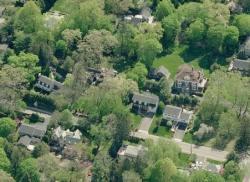Angry Residents Ask Scarsdale Village Board to Discard the 2016 Revaluation
- Details
- Written by Joanne Wallenstein
- Hits: 12773
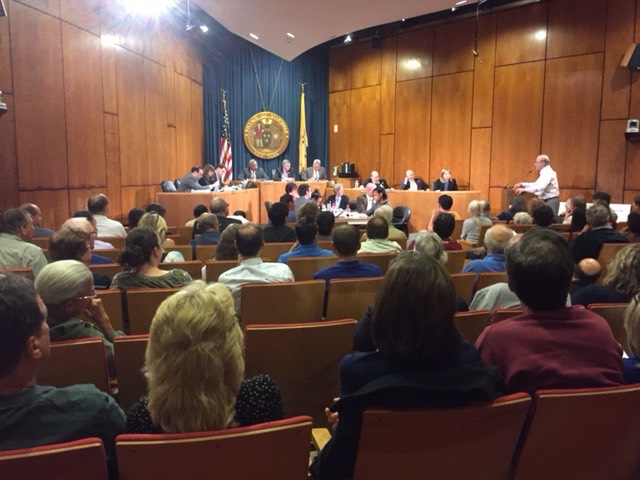 Long time residents, small property owners and retirees had their night in Village Hall on Tuesday June 14 when they came to express their dismay about their new assessments after the second village-wide property revaluation. Unlike the aftermath of the first revaluation in 2014, when owners of large homes in the Heathcote Association and Murray Hill dominated the conversation, this new revaluation appears to have had the biggest impact on those least able to handle a tax increase.
Long time residents, small property owners and retirees had their night in Village Hall on Tuesday June 14 when they came to express their dismay about their new assessments after the second village-wide property revaluation. Unlike the aftermath of the first revaluation in 2014, when owners of large homes in the Heathcote Association and Murray Hill dominated the conversation, this new revaluation appears to have had the biggest impact on those least able to handle a tax increase.
This second revaluation comes just two years after the Village conducted the first village wide revaluation in 45 years in 2014. That revaluation, conducted by Tyler Technologies and audited by John F. Ryan, brought big increases in assessments to some of Scarsdale's premium homes. Just as homeowners questioned the validity of this revaluation this week, in May, 2014 David Bunzel who lives in the Heathcote Association told trustees that the "Heathcote Association had posted a petition to delay the revaluation and received a large number of signatures from people all over the Village including 80 in Fox Meadow and the 40 in our area" and said there is "substantial support from your constituents to defer it and get it right the first time."
In 2014, Josh Frankel of Black Birch Lane defended Tyler and quoted a report from the Scarsdale Forum that said, "many large estate properties were substantially under-assessed and these property owners are enjoying a windfall on the backs of other Scarsdale taxpayers."
On Tuesday night, the audience appeared to be populated with far more owners of modest homes on .11 acres than their neighbors in Murray Hill who received large reductions in their assessments. For example, Steve Rakoff, who was a big proponent for a second revaluation, saw a significant decrease in the valuation of his own home. At a November 2015 meeting of the Board of Trustees, the Morris Lane resident and developer claimed that as a result of the 2014 revaluation, homeowners in Edgewood, Greenacres and sections of Fox Meadow were receiving "discounts" on their taxes at the expense of the owners of the larger properties. Rakoff said, "If you live in Edgewood on .2 of an acre and send three children to the schools, Scarsdale is funding you to the tune of $67,000. You have a real deal!" This time around, the assessment on his home decreased $750,000 from $4,650,000 to $3,900,000.
This week Village Hall was filled with scores of residents of more modest homes who complained that about the increase in their assessments, questioned the assumptions and methodology behind the new model and asked the trustees to revoke this new tax roll and return to the 2014 assessments.
Several people had called for the assessor to provide statistics on the revaluation; i.e. how many home assessments had gone up, how many had gone down and how many had remained the same. They also asked for assessment data by neighborhood so that they could see which areas were rising and falling. The Mayor said that this data would not be provided now, "as the staff is giving priority over the next week to answering resident questions about the grievance process and assisting them with procedural matters in light of the fact that the grievance filing deadline is June 21st, as you know. Among other things, it is noted that the sort of information you are requesting does not directly impact an individual property owner's grievance filing since such filing focuses on the assessed value of the resident's property."
Josh Frankel attempted to determine these statistics using the data that is available on the Village website. He called this new revaluation "not a tweak but a complete overhaul," that has reversed the effects of Tyler's work in 2014.
Here are the numbers he computed: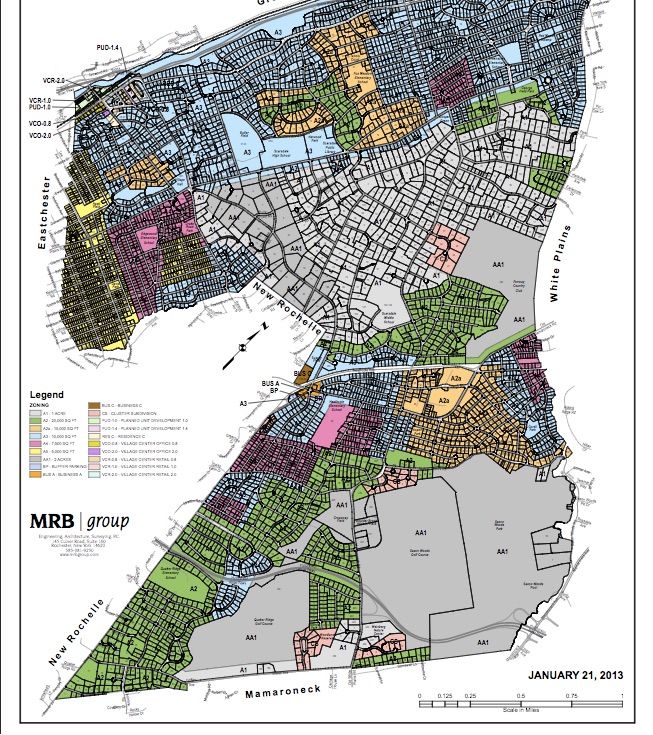
Of approximately 5,900 parcels in Scarsdale, 2,820 saw their assessed value change by more than 10% up or down and 19% saw their valuation change by more than 20%. The total of all properties in zone A1 (largely Heathcote) declined by 6% and relief for them was spread across other zones – A4, A3, A5 (Fox Meadow, Edgewood) where 3,900 parcels rose on average 50,000 each. On average A1 parcels went down by $233,000 each. Frankel said, "The onus should not be on the residents to clean up after the Village Board."
And Michael Levine, an expert statistician and resident, also analyzed the reval numbers. His report can be found posted on the village website here.
Mayor Mark and Attorney Wayne Essanason patiently explained the process for grieving the new assessments, yet many asked why individuals had to hire professionals to appeal when, in their view, the Village had made errors. Michael Kerr of Fox Meadow Road said, "If the person who drove by my house made a mistake, why is the onus on me to file a grievance. I bought my house three years ago and the assessment has gone up $500,000! I should not have to explain this at all. There should be responsibility taken for the mistakes that have been here. The model is flawed. I don't want to have to hire someone to explain this – I would like an apology."
Dennis Meahan of Barry Road echoed the concerns of many retirees at the meeting when he told trustees, "I have been in the house for 40 years. I hosted two STEP children from Mississippi and Tennessee. I have three grandchildren in Edgewood and they all go to school here. I have never challenged my assessment. Two years ago someone from Tyler went through the house and it went down. This year, it went up $135,000. We are senior citizens and we work part time. Does this town want diversity – does it want to keep its senior citizens?"
Karen Coape Arnold who lives at 1000 Post Road hinted at the effect teardowns and development may have had on the land value component of home assessments. She said, "I live at 1000 Post Road and have done several thousand closings. I am concerned that people will be attracted to big houses on small lots. What happened to a Village in a Park? Developers are going to buy these lots and destroy our neighborhood. I live across from a commercial business, and the fire station. I have no snow removal and my assessment went up $900,0000." (Note: her land value rose from $1,185,000 to $1,900,000 for a home on one of Scarsdale's busiest thoroughfares.)
Trustees originally authorized this new revaluation to tweak Tyler's work and correct "outliers" from the last revaluation. Though it utilized the same data from the home inspections conducted before the 2014 revaluation, a different methodology was used to do the assessments. The first reval used comparable sales to value similar homes, while for this one, a statistical model was built based on a regression analysis of a range of variables.
Several speakers at the meeting claimed to have professional experience with statistical models and questioned Ryan's work.
Mayra Kirkendall-Rodriguez said, "We have spent 200 hours analyzing the model.It pays no attention to model risk.... It is important to validate the data. It must be accurate and consistent and validated by an independent person. Our town's reputation is at stake. Credit rating agencies will not look favorably at a town with inconsistent income streams."
Neelson Daniels of 1109 Post Road concurred, saying that he has a background in statistics and that there are "fundamental flaws with the process and the model itself. I do independent valuation of models that are used by the banks. Are the outcomes reasonable? Will it predict the value of a home? Get an independent auditor to validate it. I would do it but I am biased! My taxes have gone up 30%. If we find it is flawed we can go back to the other model."
Like many residents on small lots, Kai-Hong Teng on Ridgecrest East in Greenacres experienced a big increase in his assessment, which rose 62% from $759,000 to $1,225,000. He said, "I worked with numbers for years. The first thing you do when you get numbers is to do a sanity check. Do the numbers make sense? And this does not pass the smell test. It does not pass any test."
Residents posed many theories as to why the model was flawed. Here are a few we heard:
- The sale of properties for teardowns had skewed the value of the land vs. the dwelling.
- Fox Meadow homeowners were paying a premium as it received the highest multiplier in the model of 1.30 with Heathcote at 1.15, and Edgewood, Greenacres and Quaker Ridge all valued equally at 1.10.
- There were too few sales of homes above $3 million during the period July, 2014- September, 2015 to have an accurate database for the model.
- The model was not validated by an independent auditor.
There were even a few who spoke who had not been adversely affected but were concerned with the outcome. Norman Bernstein said, "I don't have a dog in this fight. My taxes did not go up materially but I am concerned about the assumptions. The people who are benefitting have a high priced house. That is a grossly unequal and unfair result. You authorized this valuation you can unauthorize it! Don't tell me you need an evaluation in September – you have one – use the Tyler valuation."
As the night wore on, the audience grew more raucous, clapping loudly for extended periods and often screaming out from their seats rather than going up to the microphone to speak.
Residents questioned the mayor and the village attorney on how they might invalidate or disregard this new tax roll and continue to use the 2014 assessment. Village Attorney Wayne Essanason said, "Technically I believe that the board could adopt a resolution invalidating the reval process.... In order to do that there has to be sufficient reason, not just a politically motivated group. But then there would be a legal challenge from another group. We would need an objective basis to invalidate it. .... The court could find it arbitrary and capricious. It is a very high threshold."
One man said, "The dust had just settled on the first revaluation and now the BOT decided to go ahead with another revaluation and have angered even more people this time. I think you're better than that. I want to encourage you to do the right thing and consider your legacy as a board. Consider all your options going forward instead of putting the burden on us. There are other options that are available to you."
A Rock Creek Lane woman whose assessment rose $250,000 said, "Why did you reassess everything? Fire this man. He didn't do a good job."
Another man said, "We have the numbers in and we can't change them now. We have two valuations. Why can we not use the more thorough reval that was done by Tyler. Two years have gone by, a lot of people who would have grieved, already have. Why can't we pick and use Tyler. My grade and the condition of my house were bumped up and increased my assessment by 50%. That sounds illegal to me. If something was so flawed, there must be methodology of realizing this and not driving off the cliff. So the people who are the experts screwed up royally – and if they increased my assessment by 50% I might get lucky and get 25% back? Really – is that what we're worth? It's an embarrassment. It almost seems criminal to me."
Robert Berg, a proponent of the first revaluation who opposed the second one said, "As I said before, I think this reval was so flawed that it violates the equal protection clause and people can challenge it or file a class action suit to void it. I think this board has some ability to void this reval. I would urge the board to look into any legal ability they have to do it."
The Mayor assured residents that the Board was listening. He said, "We will give it some thought. We do hear you. We do hear the shock that many of you are in."
New 2016 Tax Valuations Posted on Village Website: Did Your Assessment Go Up or Down?
- Details
- Written by Joanne Wallenstein
- Hits: 30433
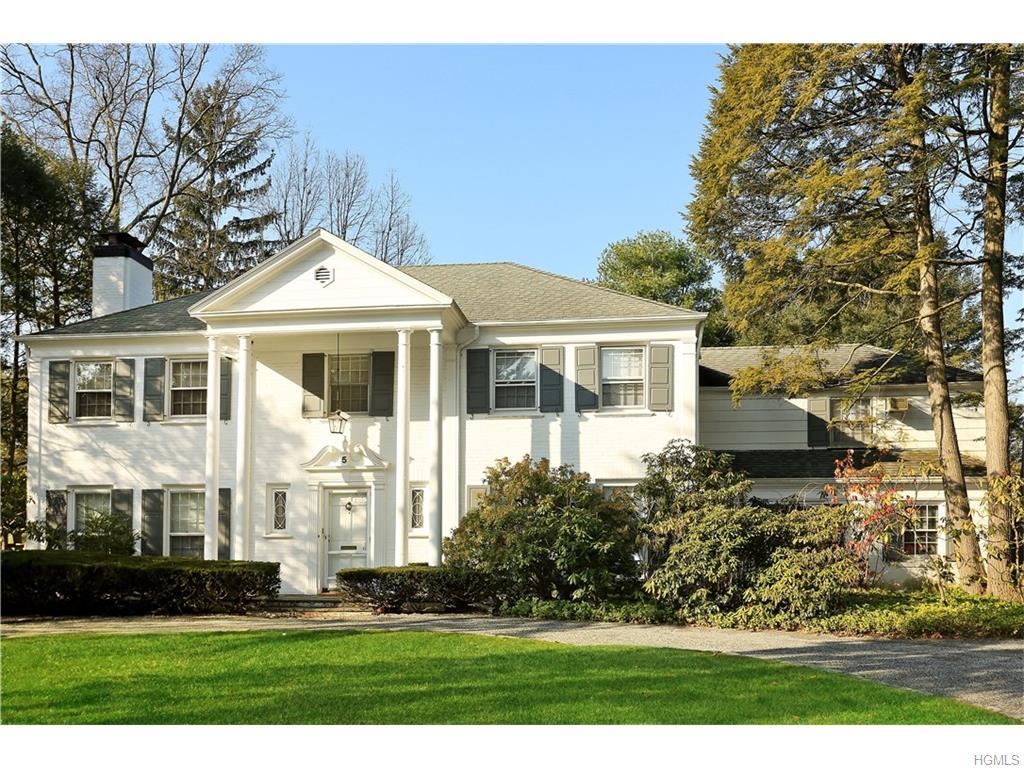 The new 2016 real estate tax valuations for Scarsdale properties are now posted on the Scarsdale Village website. You can click here to see how you fared by selecting your street and house number. On your property record you will find your tentative AV or assessed valuation for 2016 that you can compare to the 2015 AV shown in the column at right.
The new 2016 real estate tax valuations for Scarsdale properties are now posted on the Scarsdale Village website. You can click here to see how you fared by selecting your street and house number. On your property record you will find your tentative AV or assessed valuation for 2016 that you can compare to the 2015 AV shown in the column at right.
According to Village Assessor Nanette Albanese, you can calculate your approximate tax bill by multiplying the valuation by .0234. For example, if your home is valued at $1,400,000, multiply that valuation by .0234 and you'll find that your estimated taxes for 2017 will be $32,760. However, Albanese warns that the tax calculation factor could change when the 2016 school tax rate is posted in August 2016. The 2016 assessments are the basis for tax bills in 2017.
Unlike the prior revaluation which was based on comparable sales, these values were determined by the formulation of a model based on all sales in Scarsdale from July 1, 2014 through September 25, 2015. The Village has posted a chart of the sales that went into the formulation of the model on their website and you can see it here:
The Village Assessor's office will mail change of assessment letters to homeowners on June 3. According to the assessor, these letters will "Show the 2015 and 2016 assessments and the difference between the two. Mailed along with that document will be a document entitled 2016 VALUATION DETAIL SHEET, which will set forth the elements of the property used in the modeling process and the 'coefficients' that were generated." From this information you will be able to calculate the valuation for a property.
Those wishing to grieve their tax assessment can do so from today until Tuesday June 21. You can find the appropriate form on the Village website here:
Probably the biggest changes in assessment were for the higher value homes as there have been fewer sales of homes valued above $3 million this year. The valuations may reflect a softening in the market for this segment of the market.
Commenting on the results of this second revaluation, Robert Berg, who sits on the Board of Assessment Review said, "From my cursory review, the huge winners are many in the Heathcote/Murray Hill area, with many values dropping to very low numbers. Check out, Birchall Drive where one home goes from $3.8mm to $2.875mm for a 7,708 square foot house graded A 100% on one acre. That's a good deal. Another home on Birchall goes from $3.121mm to $2.625mm for a 5,651 square foot house on .97 acres graded A+ 130%. Seymour Topping's property at 5 Heathcote Road is essentially unchanged in value and there are no changes to Christie Place values at all, despite some fair market value rentals in the buildings. On streets like Boulevard, some small houses went way up while others did not. To me it seems totally random, except for the big drop for many of the estate properties."
Check out your new valuation and post your comments and observations below.
Scarsdale Gets Fresh
- Details
- Written by Joanne Wallenstein
- Hits: 5915
 Scarsdale will soon have two new options for fans of fresh-pressed juices, cleanses, smoothies and healthy foods. Pure Raw Juice is opening on Harwood Court and Organic Pharmer on Garth Road.
Scarsdale will soon have two new options for fans of fresh-pressed juices, cleanses, smoothies and healthy foods. Pure Raw Juice is opening on Harwood Court and Organic Pharmer on Garth Road.
This will be PURE's second location in Westchester, with another on Fisher Avenue in Tuckahoe. The site will offer juice blends with vegetables, raw nuts, coffees, and natural foods and snacks such as burritos and chia pudding.
Scarsdale will also be the second location for Organic Pharmer which is now open in the Rye Ridge Shopping Center. Both Pure and Organic Pharmer are backed by medical professionals, with Chiropractor Dr. Joey Amato behind Pure and Dr. Susan Blum guiding Organic Pharmer.
Amato is the author of "The Absolute Truth & Common Sense!" which outlines his theories about the ties between emotional and physical health and the importance of eating raw fruits and vegetables.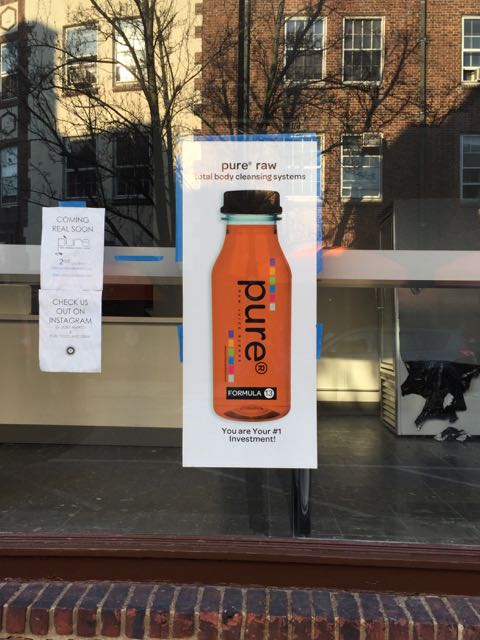
Dr. Susan Blum believes in a vegan diet without gluten, soy, dairy, corn or eggs. Organic Pharmer offer cold-pressed juices, protein shakes, smoothies, leafy salads, soups, vegetables and grains.
Watch for these two healthy food alternatives in town soon.
A Fiesta of Mexican Food at Rancho Grande
- Details
- Written by Judie Dweck
- Hits: 8173

For over eight years, Rancho Grande has stood proudly overlooking Central Avenue in The High Ridge Shopping Plaza in Yonkers. The fiesta like flavor of Mexico permeates the food, as well as the atmosphere. The addition of Executive Chef Angelo Magno to their kitchen, prompted me to visit with high expectations. Chef Magno has graced the kitchens of the now defunct Tango Grill, and Milonga and most recently at the upscale Gaucho Grill. His culinary skills light up the kitchen. His wish is," To one day be a chef that everyone in the industry knows." He is well on his way. "I find my work new and exciting. I cook real food for real people. "With his memorable presentations of traditional Mexican dishes, many from his roots in Puebla, a meal at Rancho Grande is a fine experience.
The truly "grande" space seats about 320 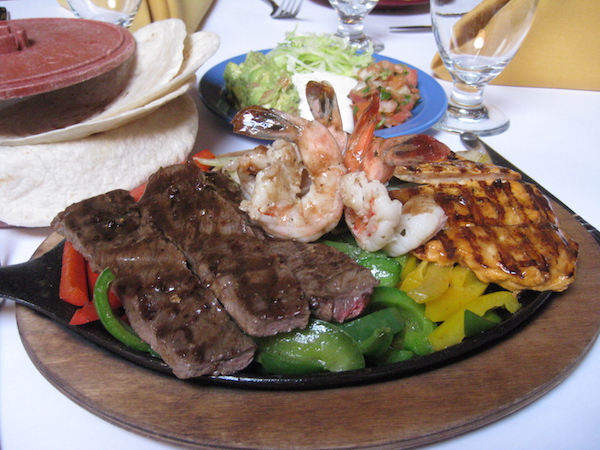 guests in its several dining areas and expansive bar. Artifacts from Mexico, mirrors, paintings, photos and eye-catching murals of Mexican scenes adorn the brick, stone and wood walls. Enter through the impressive heavy wood and wrought iron door, one of the dining areas looks out onto Central Avenue and in warm weather the floor to ceiling windows open for a pleasant setting. Every other Friday evening, a trio performing Mexican music adds to the joyful scene. Also enticing are happy hours, discounts for seniors and free meals for young children at certain hours.
guests in its several dining areas and expansive bar. Artifacts from Mexico, mirrors, paintings, photos and eye-catching murals of Mexican scenes adorn the brick, stone and wood walls. Enter through the impressive heavy wood and wrought iron door, one of the dining areas looks out onto Central Avenue and in warm weather the floor to ceiling windows open for a pleasant setting. Every other Friday evening, a trio performing Mexican music adds to the joyful scene. Also enticing are happy hours, discounts for seniors and free meals for young children at certain hours.
Rancho Grande is owned by Mary Maloney, and managed by Jose Perez, who hails from Puebla and pursued his restaurant career in Nevada, Briarcliff and Chappaqua before arriving in Yonkers. With so many Mexican restaurants, Perez believes that, "Ours is special in its authenticity. It really gives one the feeling of being in Mexico. We combine classic dishes with creative touches and we are always improving in food and décor. I give my heart to the business and our goal is to fill our tables and become a popular destination."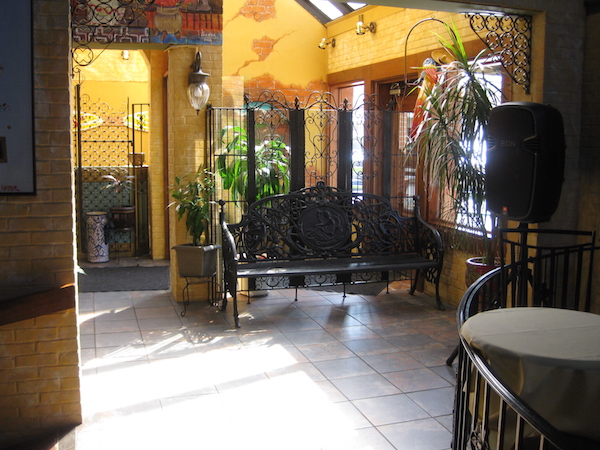
From the grill, we loved the carne asada poblana. Here, thinly sliced skirt steak was nicely marinated and grilled to tender perfection. It arrived with a chicken mole enchilada, guacamole and pico de gallo. Chef Magno noted how much we loved the mole and our next dish was mole poblano. The bone in chicken breast was cooked in the classic sauce that is unique in including unsweetened chocolate as one of its ingredients. This sauce has its origins in ancient Mexican history. Pork filled tamales, the pork encased in cornmeal and wrapped in corn husks and steamed and chiles rellenos, where the roasted chile poblanos are dipped in batter stuffed with cheese and served with tomato sauce, were each divine. The vegetarian in your group can dine on vegetarian fajitas, vegetarian paella, spinach burritos and vegetarian crepes. On my list of future possibilities are Pescado Veracruz, Mariscada Don Francesco and salmon with mango.
We barely had room for dessert, but Chef Magno's tres leches cake, a perfect flan and a tableside preparation of rum flavored fried bananas with whipped cream added fireworks to our finale. A variety of margaritas with enticing names, sangria and beer can accompany your festive Mexican meal at Rancho Grande.
Rancho Grande
1789 Central Park Avenue
Yonkers, NY
(914) 337 3056
Click here to read more about Rancho Grande
TAQUITOS AL CARBON {grilled skirt steak tacos} 4 taquitos
1 pound skirt steak, diced and salted to taste
1 cup chopped onions
2 plum tomatoes, diced
1 lime cut into wedges
½ bunch fresh cilantro leaves
8 scallions, grilled
3 cloves garlic, mashed
1 cup olive oil
¼ tsp. ground cumin
4 corn or flour tortillas, warmed
Marinate the diced beef in a mixture of oil, cumin, garlic and salt to taste for 1 hour. Sauté the marinated steak in a pan over medium heat with the onion and tomatoes. Toss with the cilantro. Divide the mixture among the 4 tortillas that are warmed. Roll each tortilla up and garnish with a grilled scallion. Serve with lime wedges.
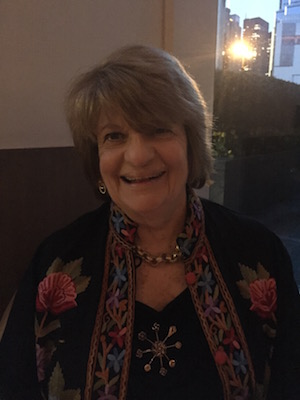
Option D - Save Greenacres and Let Everybody Win
- Details
- Written by Joanne Wallenstein
- Hits: 5128
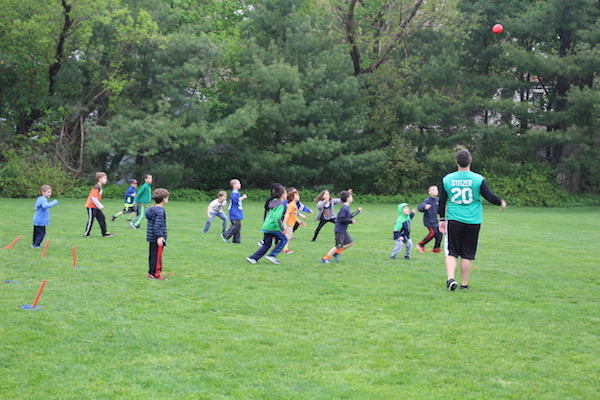 This letter was sent to Scarsdale10583 by Greeenacres Resident Jamie Kayam:
This letter was sent to Scarsdale10583 by Greeenacres Resident Jamie Kayam:
Some of us may have already met, as I have served on the Village's Board of Architectural Review for two years now, and have just committed to a new term of continued volunteer service.
Like many of you, I live in Greenacres. My wife and I have three children who will soon be entering the school system over the next few years.
Regarding the future of Greenacres School, to date, I've been observing a debate of opposing voices that support a very limited set of options the Board of Education has provided, but from all sides, I just see people digging into positions as if the debate is over.
Village Hall and the BAR have no official or legal affiliation with the Board of Education on the matter of school construction, however, as a concerned citizen and a member of the BAR, I feel I have a perspective worth sharing. At BAR meetings we are challenged to scrutinize hundreds of projects in the village with a mandate to keep Scarsdale's character and quality-of-life preserved as much as possible.
For Greenacres there are many issues we could all come together on, yet the public argument continues to circle a small range of mediocre options. This just isn't the best way to view the situation.
Let's start by reviewing some issues we can all likely agree on; we all want:
- The best school environment.
- The most green space.
- Preservation and curated change that makes sense for our neighborhood.
Now consider what the BOE has offered us:
- Option B. Build an extension on the current structure. This will include a disruptive and potentially dangerous process to deliver a cramped addition on a crowded lot.
- Option C. Build a new school in the middle of a valued green space to gain more parking spots and an under-developed building. This design ignores many options that would maximize its effectiveness as a public structure. The proposed design has no basement, it lacks multiple large spaces and it has a sprawling footprint. At the time of my review, this design also included an inaccurate plan for a new green space in place of the demolished school that did not account for ground elevations that will result in a loss of usable space.
Options B and C are lacking in quality and do not offer change worthy of our community. A professional posture would immediately suggest more options be made available.
Let's keep this simple so everybody can win.
Some process suggestions:
- Demote the current firm from exclusivity to design the future of Greenacres School.
- Open up the design process so as many ideas as possible can flow in from as many sources as possible.
- Require new designs to present a complete and accurate vision for the future of Greenacres School.
Don't get caught up in the urgency of the matter — we have time to create a better product.
My personal design suggestions:
Build a larger, more useful institution on the north, west, or east side of Greenacres Field, with a fully-functioning basement level, and more large rooms, and courtyards, and rooftop greenhouses, and lots of other good stuff, and yes, include a parking lot and delivery lot as well.
Permanently close the current Huntington Avenue passage and consider a relocation of the passage to accommodate a new design.
Present a new design for the south side of the field that includes a drop in the elevation where the existing old school would be demolished, complete with a retaining wall to present a leveled, usable green space that will replace the lost space on the north side.
Present a plan that keeps Greenacres Park open and available to the public during construction.
I realize this is a busy time for the BOE and all residents, and I applaud the extended effort everyone is making to move the process forward. During the first rounds of the BOE's presentations and meetings, I had reached out to the BOE to volunteer to help as a concerned resident, and although I have not been called upon, I continue to offer to help.
As time permits, I am going to post designs of how I envision potential new concepts. Click here to view my designs:
On a closing note, I recently brought my oldest son to Greenacres School for kindergarten orientation. This is an exciting and wonderful time for all young families and neighbors, and I know we can all work together to continue the tradition of excellence in Scarsdale.
Thanks for your time.














